Travel Destination
Japan
You can read Jamie's original proposal HERE.
Jamie's Travel Blogs
6/5/2014
Coming out of my 10 days of silent meditation at Dhamma Bhanu today, it seems very apt to discover that the Flemming Collection chose this week to feature my work. In my experience of the Vipassana I felt there was some tangible sense of the philosophy I studied at art school and of the statement which accompanies my work on display in their gallery.
25/4/2014
Before travelling on from Kyoto I stayed a few nights at Shunkoin Temple in the north west of Kyoto (http://www.shunkoin.com/). It's run by Reverend Takafumi Kawakami, an English speaking vice-abbot with a relaxed approach to incorporatingZen into our everyday lives. Running his classes in English, Takafumi serves as a bridge between Eastern and Western cultures. The temple has played a key role in the spread of Japanese Zen Buddhism for many years. In the early twentieth century, Zen scholars such as Dr.Hoseki Shin’ichi Hisamatsu and D.T. Suzuki met here to discuss both Western and Japanese philosophy whilst Hisamatsu was resident at Shunkoin.
Speaking to Takafumi it was interesting to learn that Hisamatsu later travelled to the United States where he met with Martin Heidegger (and others) to discuss the differences - and similarities - between philosophical ideas in the east and west. Heidegger's influence from Zen Buddhist thought was one of the links which through my dissertation initiated my interest in coming to Japan at this time. I also discovered the theme of the Zen garden at Shunkoin is based on the landscape of Ise and the Great Shrine of Ise, which is the head of all Shintō shrines in Japan. Interested in the relationship between Zen Buddhism and Shinto, Ise was already one of my planned visits.
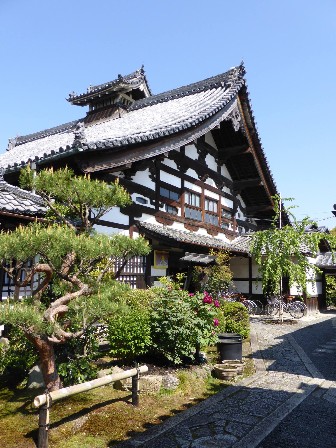
As in my statement of proposal for this trip and interested in the origins of Japan's Buddhist culture I decided to go and spend 10 days here http://www.bhanu.dhamma.org/ before carrying on to Ise.
Its neither Zen nor Shinto, but as Buddhism essentially made it's way to Japan from India via Korea and China, I thought it would be a good opportunity to go and spend some time 'in the place' where in a sense most work as an artist begins...I'm not allowed any writing materials or electronic gadgetry, so no photos
...in the meantime I'll leave you with a brief snapshot of some of how Kyoto appeared in between blossom and carving the mokuhanga
Fushimi inari shrine
Feet
The Golden Pavillion
Arashiyama and the bamboo forest
22/4/2014
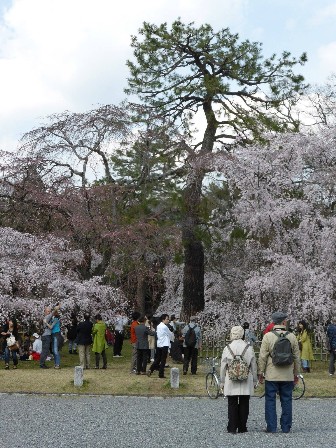
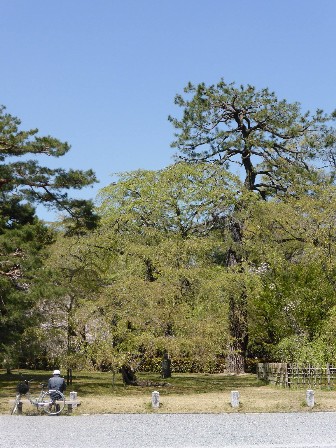
If you look around enough, or travel north probably, you will still find some late bloomers, but recently most of the cherry trees in Kyoto's popular blossom spots have passed to the next season ... and the people have moved on too
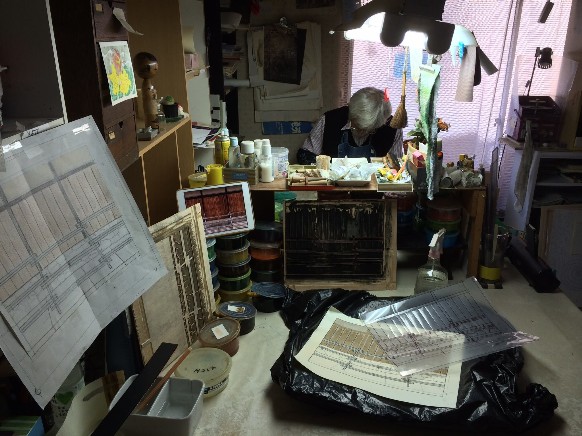
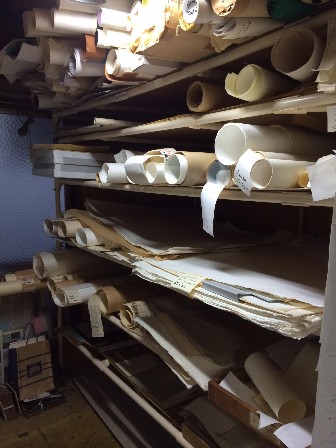
Richard at work in his studio where I've been working alongside him. It's small but packed with stuff in every available space ..
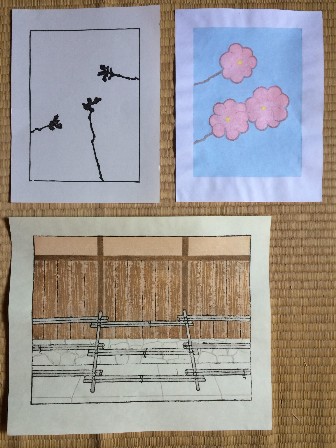
And three traditional proof prints I carved whilst there
5/4/2014
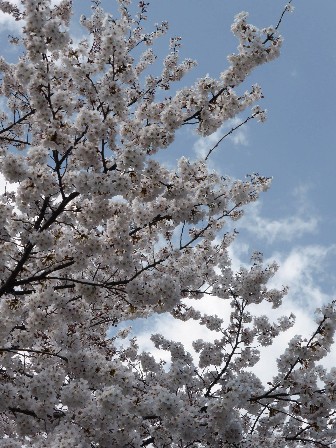
After another week I'd say that full bloom has arrived in Kyoto
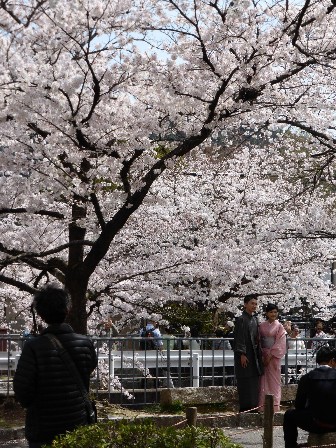
All around the city people are making the most of it while it's at it's best, this was a couple of days ago now, possibly Wednesday
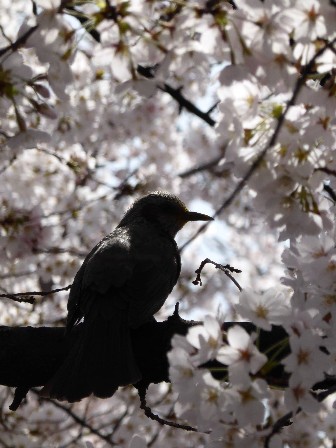
The birds are pretty happy too
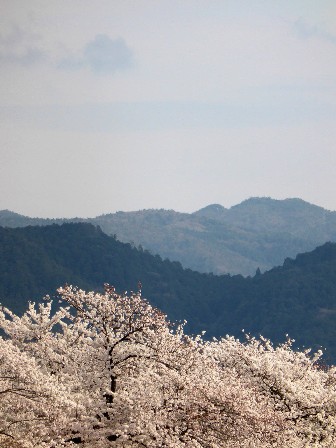
Looking beyond the bloom to the mountains which surround Kyoto
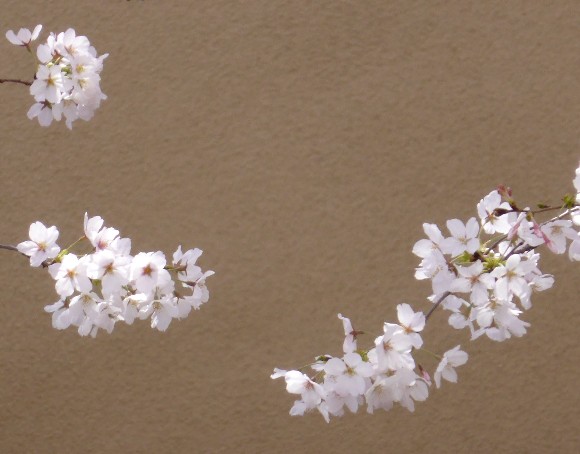
The blossom season can be short, and today is cold with rain forecast too and the blossom may all be gone for another year very soon, but I'm hoping I'll catch a bit more before it does ....
1/4/2014
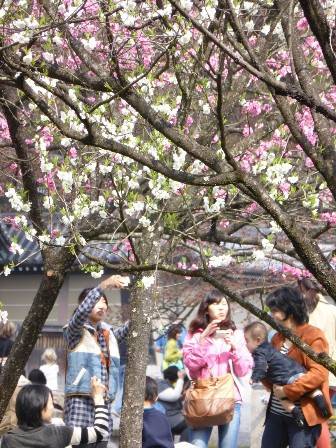
All over town people gather to enjoy the seasonal flowering
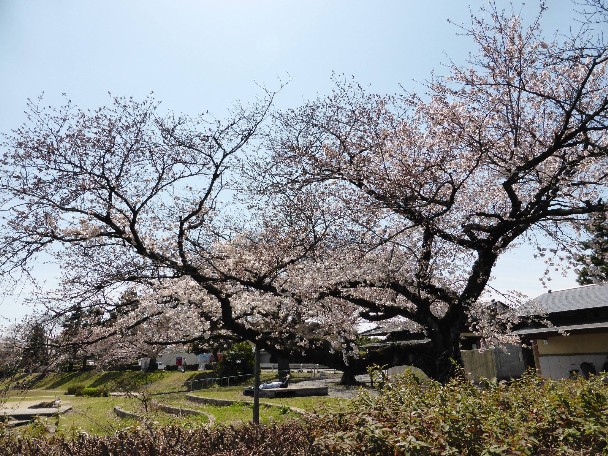
For some looking up to the sky from underneath is the only way to appreciate the bloom
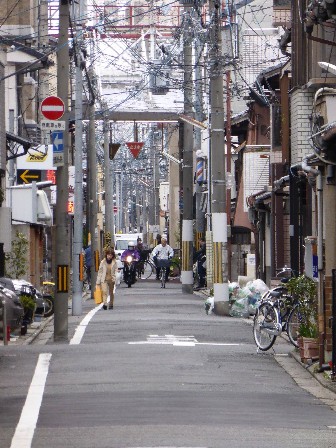
Of course for me it's not all blossom and blue sky ...
This is the street where the studio I'm taking a short course in Moku Hanga is ...there are lots of these streets that seem to go on forever...all next to one another ...and in all directions ...and yes, it was hard to find the first time ....and the second ...
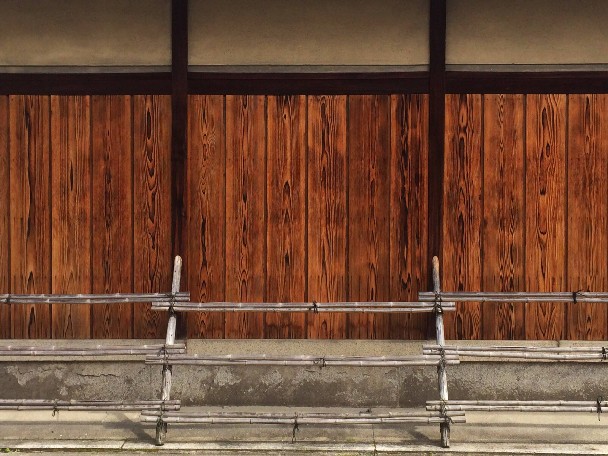
Despite the chaotic appearance of the streets in the previous post, the beauty (and maybe the Zen, or the reason for its prominence) ..in a city like Kyoto is that even in streets as busy as these your going to find just as much simplicity integral to the architecture at every turn as there is confusion
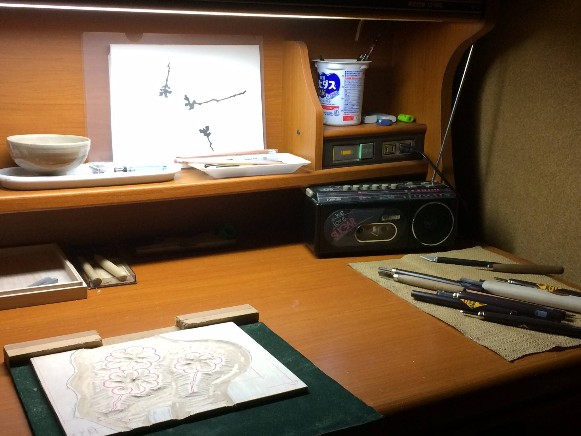
Some simple beginnings of my first wood block print
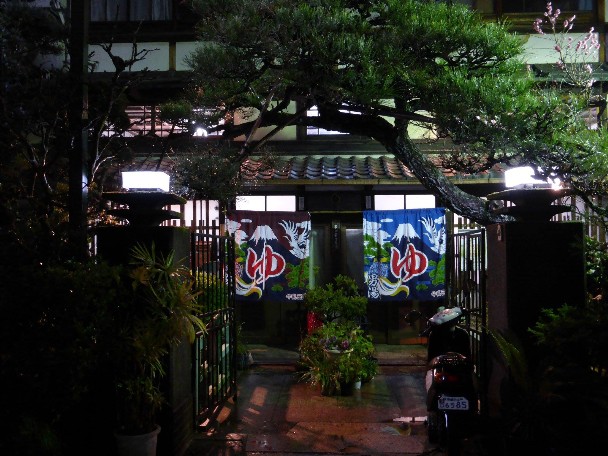
One more thing which there are plenty of throughout the city and a great way to end a busy day in Kyoto ... A traditional Japanese sento two minutes walk from where I'm staying ...£2.00 for as much hot water, bathing and sauna as you could want in one night ...
31/3/2014
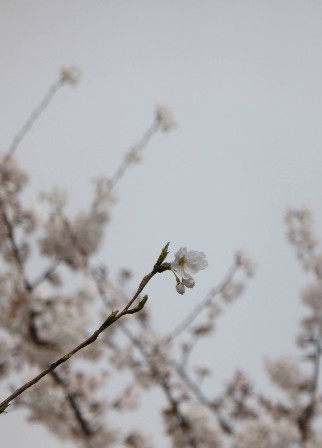
Good evening, morning or afternoon from Kyoto depending on where and when you are when you read this...
You may have been hearing that the blossom has been making a show around town... well yes, the buds are blooming
26/3/2014
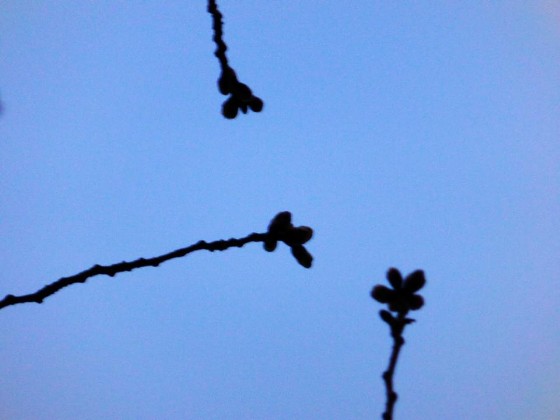
These buds wait for their time to bloom in the branches of the cherry trees that line the Philosophers Walk in the North East of Kyoto. The path gets its name due to Nishida Kitaro, one of Japan's most famous philosophers, who was said to practice meditation while walking this route on his daily commute to Kyoto University.
24/3/2014
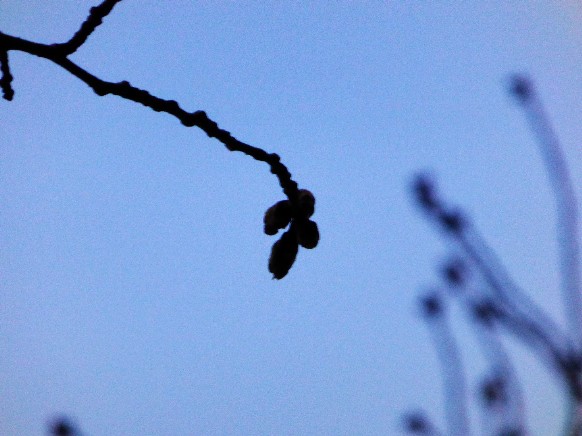
Finally got a moment to say I have arrived in Kyoto ...and I made it before first bloom
24/1/2014
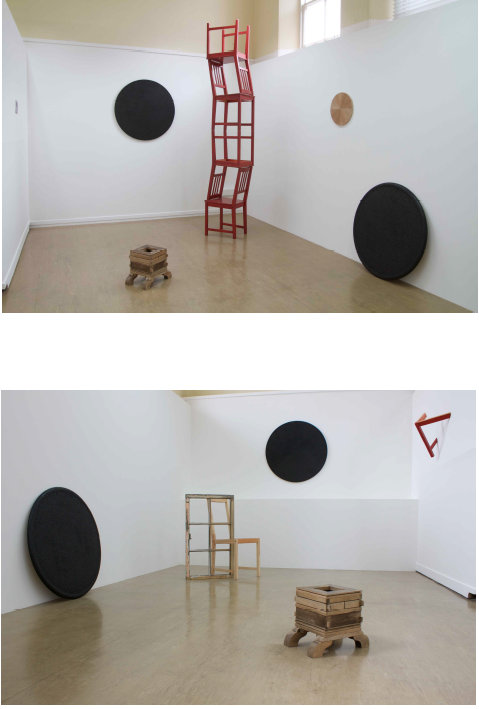
My current practice emerges from an interest in the spaces we inhabit as an extension of the self and a consideration of how a relationship with environment affects our sense of belonging in the world. These ideas were further examined during my final year of the Fine Art degree where the main focus of my dissertation centred around Heidegger’s retrieval of what he described as ‘the forgotten meaning of being’. The relationships explored in my work reflect my own experience as a being in the world and Heidegger’s detailed search for a determination of origin free from the metaphysics of presence. Although presently intended for gallery exhibition my work holds within elements of the outdoors in its use of everyday building materials and objects which subtly evoke the built environment. In doing so it functions to blur the edge between what we perceive as interior and exterior asking us to consider our relationship with both the natural and built world we inhabit.
The influence on Heidegger’s work from eastern philosophy is well documented and my research destination is Japan where the tradition of living close to nature is exemplified in the architecture of their traditional homes and inns. I am particularly interested in experiencing Kyoto which has strong friendship links with Edinburgh and is home to 17 Unesco World Heritage Sites. In AD 794 Kyoto was the capital of Japan long before Tokyo became the bustling metropolis it is today. Before this, in AD 710, the capital was Nara which remains a much smaller suburb some 25 miles to the South of Kyoto. The potential for investigating Kyoto’s own origins provides an interesting parallel to Heidegger’s work on origin, in particular when the philosophical influence on his work from Japanese Zen is considered. Nara Prefecture is home to the earliest Buddhist monuments in Japan, which date from the 7th C shortly after the introduction of Buddhism to the country. These subsequently had a profound influence on the architecture found throughout Japan.
Situated on the coast some 90 miles east sits Ise, another important city in Japans early architectural history. Ise is home to the most sacred Shinto temples found in Japan, sites of which date back to before the early Buddhist temples of Nara. Considering some of the tenets of Shinto are rooted in the land and the natural elements of the environment, here again is an interesting source of research paralleling my early interests which led to my work on Heidegger.
Considering the breadth of possibility for immersing in the ancient history of a most unique culture just within this one region, my current plans include making Kyoto my main base for as long a period of study as I can afford. To compliment my experience of the country and its natural and built architecture I have enrolled in a Japanese Water Based Woodblock Printmaking course in Kyoto. Run on a flexible timetable to suit students’ needs this allows me to attend for one full week followed by two days each consecutive week. I anticipate the remaining 5 days each week should give me an opportunity to explore the countries origins as outlined above. My intention is to travel sometime between the end of March and the beginning of May, hopefully arriving to coincide with the spring blossoms.